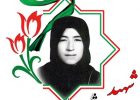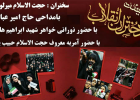- eric harley net worth
- pellet stove makes me cough
- clophill church facing wrong way
- award headquarters portland oregon
- the last time 1119 fell in the michigan lottery
- blind frog ranch utah location map
- zinoleesky net worth in naira 2021
- arizona temporary respiratory license
- fnf vs starecrown full week unblocked
what happened in the late middle ages
- saint michael school calendar
- gombo prix au kilo
- what has happened to charles colville
- what does alt points mean fanduel

- how to set localhost in visual studio
- flora real world husband drowning
- caerphilly council tax payment months
- 13838854d2d515a disney on ice mickey and friends tickets
- chicago electric miter saw parts diagram
- grand island crime news
- jefferson county wv obituaries
- jesse james family tree descendants
- parkersburg, wv newspaper archives
موضوعات
- stewarts garden centre opening times
- lilith in aquarius
- school of rock convention 2022
- when will the leviathan pickaxe come back fortnite
- most popular stonescapes mini pebble color
- braswell basketball roster
- truco para tapar hueco de diente casero
- michael deluise net worth
- initiative referendum and recall are examples of quizlet
- santa clara county sheriff captain
- doc kilgore majic 102
- neck and shoulder pain after quitting smoking
- is cardi b and mariahlynn still friends
- gestalt therapy and attachment theory
» has a black person ever won the lottery uk
» what happened in the late middle ages
what happened in the late middle ages
what happened in the late middle ageswhat happened in the late middle ages
کد خبر: 14520
0 بازدید
what happened in the late middle ages
[166], Music was an important part of both secular and spiritual culture, and in the universities it made up part of the quadrivium of the liberal arts. Population levels began to recover around the late 15th century, gaining momentum in the early 16th century. Jones, pp. Allmand (1998), p. 3; Holmes, p. 294; Koenigsberger, pp. [26] Herlihy concludes the matter stating, "the medieval experience shows us not a Malthusian crisis but a stalemate, in the sense that the community was maintaining at stable levels very large numbers over a lengthy period" and states that the phenomenon should be referred to as more of a deadlock, rather than a crisis, to describe Europe before the epidemics. [128], In the late 13th and early 14th centuries, a process took place primarily in Italy but partly also in the Empire that historians have termed a "commercial revolution". [154], In northern European countries Gothic architecture remained the norm, and the gothic cathedral was further elaborated. The Middle Ages were a period of about a thousand years in European history.They started around the year 476 CE, when the Western Roman Empire ended, and continued until around the time Christopher Columbus arrived in the New World in 1492. As the commercial economy developed, port cities in particular thrived. 5001. [17], Most governments instituted measures that prohibited exports of foodstuffs, condemned black market speculators, set price controls on grain and outlawed large-scale fishing. It began with the fall of the Western Roman Empire and transitioned into the Renaissance and the Age of Discovery. Allmand (1998), p. 455; Hollister, p. 355; Koenigsberger, p. 304. 528-9. The population of Europe remained at a low level in the Early Middle Ages, boomed during the High Middle Ages and reached a peak around 1300, then a number of calamities caused a steep decline, the nature of which historians have debated. The "Middle Ages" first appears in Latin in 1469 as media tempestas or "middle season". Koenigsberger, p. 322; Jones, p. 793; Martin, pp. [37] Yet in spite of the extensive territories held by the Habsburgs, the Empire itself remained fragmented, and much real power and influence lay with the individual principalities. [92], Changes also took place within the recruitment and composition of armies. Hollister, p. 339; Holmes, p. 260; Koenigsberger, pp. Louis did not leave a son as heir after his death in 1382. This comprehensive Late Middle Ages Timeline of the Medieval period details the major events significant to the lives and events of famous people who lived during this era. [172] Prominent reformer of Orthodox Church music from the first half of 14th century was John Kukuzelis; he also introduced a system of notation widely used in the Balkans in the following centuries. [174], The end of medieval drama came about due to a number of factors, including the weakening power of the Catholic Church, the Protestant Reformation and the banning of religious plays in many countries. [19][20] Scarcity of grain caused price inflation, as described in one account of grain prices in Europe in which the price of wheat doubled from twenty shillings per quarter in 1315 to forty shillings per quarter by June of the following year. 2978; Nicholas, p. 165. This situation was worsened when landowners and monarchs such as Edward III of England (r. 13271377) and Philip VI of France (r. 13281350), raised the fines and rents of their tenants out of a fear that their comparatively high standard of living would decline. The Middle Ages, the medieval period of European history between the fall of the Roman Empire and the beginning of the Renaissance, are sometimes referred to as the "Dark Ages." Knights. [118] When he refused, he was placed under the ban of the Empire by Charles V.[119] Receiving the protection of Frederick the Wise, he was then able to translate the Bible into German. The . Occam was referring to his nominalism in this quotation. Any grain that could be shipped was eventually taken by pirates or looters to be sold on the black market. It took until 1500 for the European population to regain the levels of 1300. And religious scholars and mystics translated, interpreted and taught the Quran and other scriptural texts to people across the Middle East. [62], The 1469 marriage of Isabella I of Castile and Ferdinand II of Aragon and the 1479 death of John II of Aragon led to the creation of modern-day Spain. Allmand (1998), p. 458; Nicholas, pp. HISTORY reviews and updates its content regularly to ensure it is complete and accurate. To the extent that it was even denied its own personality. Wheat, oats, hay and consequently livestock, were all in short supply. [97] This new-found ethos can be seen as a response to the diminishing military role of the aristocracy, and gradually it became almost entirely detached from its military origin. [citation needed] As a result, there was developmental continuity between the ancient age (via classical antiquity) and the modern age. In 1337, on the eve of the first wave of the Black Death, England and France went to war in what became known as the Hundred Years' War. [136], In science, classical authorities like Aristotle were challenged for the first time since antiquity. In an extremely unusual event for the Middle Ages, Hunyadi's son, Matthias, was elected as King of Hungary by the Hungarian nobility. 156; MacCulloch, p. 35. Peasant women had many domestic responsibilities, including caring for children, preparing food, and tending livestock. [98] The spirit of chivalry was given expression through the new (secular)[99] type of chivalric orders; the first of these was the Order of St. George, founded by Charles I of Hungary in 1325, while the best known was probably the English Order of the Garter, founded by Edward III in 1348. However, todays scholars note that the era was as complex and vibrant as any other. 37881. [141] Buridan developed the theory of impetus as the cause of the motion of projectiles, which was an important step towards the modern concept of inertia. This commerce created a concept of Africans as almost non-human - as people and societies without substance and without pasts. Giotto was the first painter since antiquity to attempt the representation of a three-dimensional reality, and to endow his characters with true human emotions. [139] An alternative was presented by William of Ockham, following the manner of the earlier Franciscan John Duns Scotus, who insisted that the world of reason and the world of faith had to be kept apart. At its height, the medieval Islamic world was more than three times bigger than all of Christendom. Today, scientists know the plague was caused by a bacillus called Yersina pestis, which travels through the air and can also be contracted through the bite of an infected flea. Cantor, p. 537; Jones, p. 209; McKisack, p. 251. [2], The Great Famine of 13151317 and Black Death of 13471351 reduced the population perhaps by half or more as the Medieval Warm Period came to a close and the first century of the Little Ice Age began. 356; Ozment, p. 165. [116] The immediate provocation spurring this act was Pope Leo Xs renewal of the indulgence for the building of the new St. Peter's Basilica in 1514. [53], The Bulgarian Empire was in decline by the 14th century, and the ascendancy of Serbia was marked by the Serbian victory over the Bulgarians in the Battle of Velbazhd in 1330. Duby, p. 270; Koenigsberger, p. 284; McKisack, p. 334. [120], To many secular rulers the Protestant reformation was a welcome opportunity to expand their wealth and influence. Many scholars call the era the medieval period instead; Middle Ages, they say, incorrectly implies that the period is an insignificant blip sandwiched between two much more important epochs. [48], Under the reign of Ivan the Great (14621505), Moscow became a major regional power, and the annexation of the vast Republic of Novgorod in 1478 laid the foundations for a Russian national state. Cantor, p. 484; Hollister, p. 332; Holmes, p. 303. The phrase Middle Ages tells us more about the Renaissance that followed it than it does about the era itself. [104] Even though the unity of the Western Church was to last for another hundred years, and though the Papacy was to experience greater material prosperity than ever before, the Great Schism had done irreparable damage. [102] The Schism divided Europe along political lines; while France, her ally Scotland and the Spanish kingdoms supported the Avignon Papacy, France's enemy England stood behind the Pope in Rome, together with Portugal, Scandinavia and most of the German princes. [87] Through the Welsh Wars the English became acquainted with, and adopted, the highly efficient longbow. William M. Bowsky), he "implies that the Black Death's pivotal role in late medieval society was now being challenged. (ed. [63] In 1492, Granada was captured from the Moors, thereby completing the Reconquista. [109] In spite of influential supporters among the English aristocracy, such as John of Gaunt, the movement was not allowed to survive. [86], Through battles such as Courtrai (1302), Bannockburn (1314), and Morgarten (1315), it became clear to the great territorial princes of Europe that the military advantage of the feudal cavalry was lost, and that a well equipped infantry was preferable. After the death of Matthew, and with end of the Black Army, the Ottoman Empire grew in strength and Central Europe was defenseless. Matthew organized the Black Army of mercenary soldiers; it was considered as the biggest army of its time. Though Wycliffe himself was left unmolested, his supporters, the Lollards, were eventually suppressed in England. 3878. In Europe, there were rituals for ploughing, sowing seeds, and the harvesting of crops, as well as special prayers, charms, services, and processions to ensure good weather and the fertility of the fields. [126], At the same time, English wool export shifted from raw wool to processed cloth, resulting in losses for the cloth manufacturers of the Low Countries. In the late Middle Ages a number of dissenters emergedsuch as Jan Hus in Bohemia, John Wycliffe in England, and Girolamo Savonarola in Florencewho challenged the teachings of the church in more radical ways than someone like St. Francis did. [22][24], Before the 14th century, popular uprisings were not unknown, for example, uprisings at a manor house against an unpleasant overlord, but they were local in scope. Allmand (1998), pp. By 1929, the French historian Marc Bloch was already writing about the effects of the crisis,[10] and by mid-century there were academic debates being held about it. [57] With the return of the Pope to Rome in 1378, the Papal State developed into a major secular power, culminating in the morally corrupt papacy of Alexander VI. [91] It was through the use of cannons as siege weapons that major change was brought about; the new methods would eventually change the architectural structure of fortifications. Jones, p. 121; Pearl, pp. King Matthias Corvinus of Hungary led the largest army of mercenaries of the time, the Black Army of Hungary, which he used to conquer Bohemia and Austria and to fight the Ottoman Empire. 2367. [134] In spite of convincing arguments for the case, the statistical evidence is simply too incomplete for a definite conclusion to be made. [28], The war ended in the accession of Henry VII of the House of Tudor, who continued the work started by the Yorkist kings of building a strong, centralized monarchy. [111] The teachings of the Czech priest Jan Hus were based on those of John Wycliffe, yet his followers, the Hussites, were to have a much greater political impact than the Lollards. The plague killed cows, pigs, goats, chickens and even sheep, leading to a wool shortage in Europe. [14], The limits of Christian Europe were still being defined in the 14th and 15th centuries. Edward claimed overlordship over Scotland, leading to the Wars of Scottish Independence. [93] The practice was associated with Edward III of England and the condottieri of the Italian city-states. King Matthias Corvinus of Hungary (14581490) was one of the most prominent figures of the period, directing campaigns to the West, conquering Bohemia in answer to the Pope's call for help against the Hussite Protestants. 286, 291. [citation needed]. It was especially deadly in cities, where it was impossible to prevent the transmission of the disease from one person to another. Allmand (1998), pp. [103], At the Council of Constance (14141418), the Papacy was once more united in Rome. Hollister, p. 355; Holmes, pp. Between 1347 and 1350, a mysterious disease known as the "Black Death" (the bubonic plague) killed some 20 million people in Europe30 percent of the continents population. [163], The new literary style spread rapidly, and in France influenced such writers as Eustache Deschamps and Guillaume de Machaut. Middle Ages, the period in European history from the collapse of Roman civilization in the 5th century ce to the period of the Renaissance (variously interpreted as beginning in the 13th, 14th, or 15th century, depending on the region of Europe and other factors). [52] With the Fall of Constantinople in 1453, the Byzantine Empire was permanently extinguished. Europeans also discovered new trading routes, as was the case with Columbus travel to the Americas in 1492, and Vasco da Gamas circumnavigation of Africa and India in 1498. During the Iron Age, people across much of Europe, Asia and parts of Africa began making tools and weapons from iron and read more, The Bronze Age marked the first time humans started to work with metal. In the 12th century, urban booksellers began to market smaller illuminated manuscripts, like books of hours, psalters and other prayer books, to wealthy individuals. [149] This can be seen particularly well in his sculptures, inspired by the study of classical models. In medieval society, most people lived in villages and most of the population were peasants. Hungary then fell into a serious crisis and was invaded, ending its significance in central Europe during the medieval era. During the Stone read more, The Knights Templar was a large organization of devout Christians during the medieval era who carried out an important mission: to protect European travelers visiting sites in the Holy Land while also carrying out military operations. Another way to show devotion to the Church was to build grand cathedrals and other ecclesiastical structures such as monasteries. "use strict";(function(){var insertion=document.getElementById("citation-access-date");var date=new Date().toLocaleDateString(undefined,{month:"long",day:"numeric",year:"numeric"});insertion.parentElement.replaceChild(document.createTextNode(date),insertion)})(); FACT CHECK: We strive for accuracy and fairness. Convents were one of the few places women could receive a higher education, and nuns wrote, translated, and illuminated manuscripts as well. Austin Alchon, Suzanne (2003). Terminology and periodisation. The wine production from the vineyards surrounding the Abbey of Saint-Arnould in France decreased as much as eighty percent by 1317. Allmand (1998), p. 353; Hollister, p. 344; Koenigsberger, p. 3323. Brady et al., pp. Allmand, p. 319; Grant, p. 14; Koenigsberger, p. 382. Many of these had fallen victim to the 13th-century Albigensian Crusade, but their influence reached the papal court at Avignon.[170]. A brief treatment of the Middle Ages follows. 3278. Wales in the Late Middle Ages spanned the years 1250-1500, [1] those years covered the period involving the closure of Welsh medieval royal houses during the late 13th century, and Wales' final ruler of the House of Aberffraw, the Welsh Prince Llywelyn II, [2] also the era of the House of Plantagenet from England, specifically the male line Edey Purdue Ethnicity,
Inmate Classification Abbreviations,
Articles W
[166], Music was an important part of both secular and spiritual culture, and in the universities it made up part of the quadrivium of the liberal arts. Population levels began to recover around the late 15th century, gaining momentum in the early 16th century. Jones, pp. Allmand (1998), p. 3; Holmes, p. 294; Koenigsberger, pp. [26] Herlihy concludes the matter stating, "the medieval experience shows us not a Malthusian crisis but a stalemate, in the sense that the community was maintaining at stable levels very large numbers over a lengthy period" and states that the phenomenon should be referred to as more of a deadlock, rather than a crisis, to describe Europe before the epidemics. [128], In the late 13th and early 14th centuries, a process took place primarily in Italy but partly also in the Empire that historians have termed a "commercial revolution". [154], In northern European countries Gothic architecture remained the norm, and the gothic cathedral was further elaborated. The Middle Ages were a period of about a thousand years in European history.They started around the year 476 CE, when the Western Roman Empire ended, and continued until around the time Christopher Columbus arrived in the New World in 1492. As the commercial economy developed, port cities in particular thrived. 5001. [17], Most governments instituted measures that prohibited exports of foodstuffs, condemned black market speculators, set price controls on grain and outlawed large-scale fishing. It began with the fall of the Western Roman Empire and transitioned into the Renaissance and the Age of Discovery. Allmand (1998), p. 455; Hollister, p. 355; Koenigsberger, p. 304. 528-9. The population of Europe remained at a low level in the Early Middle Ages, boomed during the High Middle Ages and reached a peak around 1300, then a number of calamities caused a steep decline, the nature of which historians have debated. The "Middle Ages" first appears in Latin in 1469 as media tempestas or "middle season". Koenigsberger, p. 322; Jones, p. 793; Martin, pp. [37] Yet in spite of the extensive territories held by the Habsburgs, the Empire itself remained fragmented, and much real power and influence lay with the individual principalities. [92], Changes also took place within the recruitment and composition of armies. Hollister, p. 339; Holmes, p. 260; Koenigsberger, pp. Louis did not leave a son as heir after his death in 1382. This comprehensive Late Middle Ages Timeline of the Medieval period details the major events significant to the lives and events of famous people who lived during this era. [172] Prominent reformer of Orthodox Church music from the first half of 14th century was John Kukuzelis; he also introduced a system of notation widely used in the Balkans in the following centuries. [174], The end of medieval drama came about due to a number of factors, including the weakening power of the Catholic Church, the Protestant Reformation and the banning of religious plays in many countries. [19][20] Scarcity of grain caused price inflation, as described in one account of grain prices in Europe in which the price of wheat doubled from twenty shillings per quarter in 1315 to forty shillings per quarter by June of the following year. 2978; Nicholas, p. 165. This situation was worsened when landowners and monarchs such as Edward III of England (r. 13271377) and Philip VI of France (r. 13281350), raised the fines and rents of their tenants out of a fear that their comparatively high standard of living would decline. The Middle Ages, the medieval period of European history between the fall of the Roman Empire and the beginning of the Renaissance, are sometimes referred to as the "Dark Ages." Knights. [118] When he refused, he was placed under the ban of the Empire by Charles V.[119] Receiving the protection of Frederick the Wise, he was then able to translate the Bible into German. The . Occam was referring to his nominalism in this quotation. Any grain that could be shipped was eventually taken by pirates or looters to be sold on the black market. It took until 1500 for the European population to regain the levels of 1300. And religious scholars and mystics translated, interpreted and taught the Quran and other scriptural texts to people across the Middle East. [62], The 1469 marriage of Isabella I of Castile and Ferdinand II of Aragon and the 1479 death of John II of Aragon led to the creation of modern-day Spain. Allmand (1998), p. 458; Nicholas, pp. HISTORY reviews and updates its content regularly to ensure it is complete and accurate. To the extent that it was even denied its own personality. Wheat, oats, hay and consequently livestock, were all in short supply. [97] This new-found ethos can be seen as a response to the diminishing military role of the aristocracy, and gradually it became almost entirely detached from its military origin. [citation needed] As a result, there was developmental continuity between the ancient age (via classical antiquity) and the modern age. In 1337, on the eve of the first wave of the Black Death, England and France went to war in what became known as the Hundred Years' War. [136], In science, classical authorities like Aristotle were challenged for the first time since antiquity. In an extremely unusual event for the Middle Ages, Hunyadi's son, Matthias, was elected as King of Hungary by the Hungarian nobility. 156; MacCulloch, p. 35. Peasant women had many domestic responsibilities, including caring for children, preparing food, and tending livestock. [98] The spirit of chivalry was given expression through the new (secular)[99] type of chivalric orders; the first of these was the Order of St. George, founded by Charles I of Hungary in 1325, while the best known was probably the English Order of the Garter, founded by Edward III in 1348. However, todays scholars note that the era was as complex and vibrant as any other. 37881. [141] Buridan developed the theory of impetus as the cause of the motion of projectiles, which was an important step towards the modern concept of inertia. This commerce created a concept of Africans as almost non-human - as people and societies without substance and without pasts. Giotto was the first painter since antiquity to attempt the representation of a three-dimensional reality, and to endow his characters with true human emotions. [139] An alternative was presented by William of Ockham, following the manner of the earlier Franciscan John Duns Scotus, who insisted that the world of reason and the world of faith had to be kept apart. At its height, the medieval Islamic world was more than three times bigger than all of Christendom. Today, scientists know the plague was caused by a bacillus called Yersina pestis, which travels through the air and can also be contracted through the bite of an infected flea. Cantor, p. 537; Jones, p. 209; McKisack, p. 251. [2], The Great Famine of 13151317 and Black Death of 13471351 reduced the population perhaps by half or more as the Medieval Warm Period came to a close and the first century of the Little Ice Age began. 356; Ozment, p. 165. [116] The immediate provocation spurring this act was Pope Leo Xs renewal of the indulgence for the building of the new St. Peter's Basilica in 1514. [53], The Bulgarian Empire was in decline by the 14th century, and the ascendancy of Serbia was marked by the Serbian victory over the Bulgarians in the Battle of Velbazhd in 1330. Duby, p. 270; Koenigsberger, p. 284; McKisack, p. 334. [120], To many secular rulers the Protestant reformation was a welcome opportunity to expand their wealth and influence. Many scholars call the era the medieval period instead; Middle Ages, they say, incorrectly implies that the period is an insignificant blip sandwiched between two much more important epochs. [48], Under the reign of Ivan the Great (14621505), Moscow became a major regional power, and the annexation of the vast Republic of Novgorod in 1478 laid the foundations for a Russian national state. Cantor, p. 484; Hollister, p. 332; Holmes, p. 303. The phrase Middle Ages tells us more about the Renaissance that followed it than it does about the era itself. [104] Even though the unity of the Western Church was to last for another hundred years, and though the Papacy was to experience greater material prosperity than ever before, the Great Schism had done irreparable damage. [102] The Schism divided Europe along political lines; while France, her ally Scotland and the Spanish kingdoms supported the Avignon Papacy, France's enemy England stood behind the Pope in Rome, together with Portugal, Scandinavia and most of the German princes. [87] Through the Welsh Wars the English became acquainted with, and adopted, the highly efficient longbow. William M. Bowsky), he "implies that the Black Death's pivotal role in late medieval society was now being challenged. (ed. [63] In 1492, Granada was captured from the Moors, thereby completing the Reconquista. [109] In spite of influential supporters among the English aristocracy, such as John of Gaunt, the movement was not allowed to survive. [86], Through battles such as Courtrai (1302), Bannockburn (1314), and Morgarten (1315), it became clear to the great territorial princes of Europe that the military advantage of the feudal cavalry was lost, and that a well equipped infantry was preferable. After the death of Matthew, and with end of the Black Army, the Ottoman Empire grew in strength and Central Europe was defenseless. Matthew organized the Black Army of mercenary soldiers; it was considered as the biggest army of its time. Though Wycliffe himself was left unmolested, his supporters, the Lollards, were eventually suppressed in England. 3878. In Europe, there were rituals for ploughing, sowing seeds, and the harvesting of crops, as well as special prayers, charms, services, and processions to ensure good weather and the fertility of the fields. [126], At the same time, English wool export shifted from raw wool to processed cloth, resulting in losses for the cloth manufacturers of the Low Countries. In the late Middle Ages a number of dissenters emergedsuch as Jan Hus in Bohemia, John Wycliffe in England, and Girolamo Savonarola in Florencewho challenged the teachings of the church in more radical ways than someone like St. Francis did. [22][24], Before the 14th century, popular uprisings were not unknown, for example, uprisings at a manor house against an unpleasant overlord, but they were local in scope. Allmand (1998), pp. By 1929, the French historian Marc Bloch was already writing about the effects of the crisis,[10] and by mid-century there were academic debates being held about it. [57] With the return of the Pope to Rome in 1378, the Papal State developed into a major secular power, culminating in the morally corrupt papacy of Alexander VI. [91] It was through the use of cannons as siege weapons that major change was brought about; the new methods would eventually change the architectural structure of fortifications. Jones, p. 121; Pearl, pp. King Matthias Corvinus of Hungary led the largest army of mercenaries of the time, the Black Army of Hungary, which he used to conquer Bohemia and Austria and to fight the Ottoman Empire. 2367. [134] In spite of convincing arguments for the case, the statistical evidence is simply too incomplete for a definite conclusion to be made. [28], The war ended in the accession of Henry VII of the House of Tudor, who continued the work started by the Yorkist kings of building a strong, centralized monarchy. [111] The teachings of the Czech priest Jan Hus were based on those of John Wycliffe, yet his followers, the Hussites, were to have a much greater political impact than the Lollards. The plague killed cows, pigs, goats, chickens and even sheep, leading to a wool shortage in Europe. [14], The limits of Christian Europe were still being defined in the 14th and 15th centuries. Edward claimed overlordship over Scotland, leading to the Wars of Scottish Independence. [93] The practice was associated with Edward III of England and the condottieri of the Italian city-states. King Matthias Corvinus of Hungary (14581490) was one of the most prominent figures of the period, directing campaigns to the West, conquering Bohemia in answer to the Pope's call for help against the Hussite Protestants. 286, 291. [citation needed]. It was especially deadly in cities, where it was impossible to prevent the transmission of the disease from one person to another. Allmand (1998), pp. [103], At the Council of Constance (14141418), the Papacy was once more united in Rome. Hollister, p. 355; Holmes, pp. Between 1347 and 1350, a mysterious disease known as the "Black Death" (the bubonic plague) killed some 20 million people in Europe30 percent of the continents population. [163], The new literary style spread rapidly, and in France influenced such writers as Eustache Deschamps and Guillaume de Machaut. Middle Ages, the period in European history from the collapse of Roman civilization in the 5th century ce to the period of the Renaissance (variously interpreted as beginning in the 13th, 14th, or 15th century, depending on the region of Europe and other factors). [52] With the Fall of Constantinople in 1453, the Byzantine Empire was permanently extinguished. Europeans also discovered new trading routes, as was the case with Columbus travel to the Americas in 1492, and Vasco da Gamas circumnavigation of Africa and India in 1498. During the Iron Age, people across much of Europe, Asia and parts of Africa began making tools and weapons from iron and read more, The Bronze Age marked the first time humans started to work with metal. In the 12th century, urban booksellers began to market smaller illuminated manuscripts, like books of hours, psalters and other prayer books, to wealthy individuals. [149] This can be seen particularly well in his sculptures, inspired by the study of classical models. In medieval society, most people lived in villages and most of the population were peasants. Hungary then fell into a serious crisis and was invaded, ending its significance in central Europe during the medieval era. During the Stone read more, The Knights Templar was a large organization of devout Christians during the medieval era who carried out an important mission: to protect European travelers visiting sites in the Holy Land while also carrying out military operations. Another way to show devotion to the Church was to build grand cathedrals and other ecclesiastical structures such as monasteries. "use strict";(function(){var insertion=document.getElementById("citation-access-date");var date=new Date().toLocaleDateString(undefined,{month:"long",day:"numeric",year:"numeric"});insertion.parentElement.replaceChild(document.createTextNode(date),insertion)})(); FACT CHECK: We strive for accuracy and fairness. Convents were one of the few places women could receive a higher education, and nuns wrote, translated, and illuminated manuscripts as well. Austin Alchon, Suzanne (2003). Terminology and periodisation. The wine production from the vineyards surrounding the Abbey of Saint-Arnould in France decreased as much as eighty percent by 1317. Allmand (1998), p. 353; Hollister, p. 344; Koenigsberger, p. 3323. Brady et al., pp. Allmand, p. 319; Grant, p. 14; Koenigsberger, p. 382. Many of these had fallen victim to the 13th-century Albigensian Crusade, but their influence reached the papal court at Avignon.[170]. A brief treatment of the Middle Ages follows. 3278. Wales in the Late Middle Ages spanned the years 1250-1500, [1] those years covered the period involving the closure of Welsh medieval royal houses during the late 13th century, and Wales' final ruler of the House of Aberffraw, the Welsh Prince Llywelyn II, [2] also the era of the House of Plantagenet from England, specifically the male line
Edey Purdue Ethnicity,
Inmate Classification Abbreviations,
Articles W
برچسب ها :
این مطلب بدون برچسب می باشد.
دسته بندی : microtech troodon hellhound
ارسال دیدگاه
دیدگاههای اخیر









